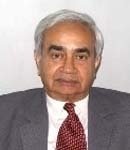Carnegie Nuclear Policy Conference 2013: Deterrence and Disarmament
28 Apr, 2013 · 3897
PR Chari analyses the session on "Deterrence, Disarmament, and Non-Proliferation in Obama's Second Term"
Prague 2.0 is an evocative agenda item in which to situate the global issues arising from nuclear weapons, and embedded in arresting their proliferation and eliminating them, while ensuring conflict avoidance and prevention. Consequently, a plenary session in the recently concluded Conference held in Washington by the Carnegie Endowment for International Peace was devoted to “Deterrence, Disarmament, and Non-Proliferation in Obama's Second Term”. The panellists included an American official (Rose Gottemoeller), a Russian Scholar (Alexie Arbatov), and a Chinese General (Yao Yunzhu), ensuring that widely different perspectives from the Nuclear Big Three would be available.
It became apparent that mutual understandings reached between the US and Russia on nuclear issues was breaking down, despite their signal success in negotiating and operationalizing New START. The further reductions in their offensive strategic weapons - together they hold 90 % of the 18,000 nuclear weapon systems in the world - is NOT the problem. The dangers lay elsewhere viz. the linked issues of ballistic missile defences, conventional precision-guided conventional weapons, tactical nuclear weapons, and states of proliferation concern. The Chinese panellist reiterated her country’s traditional position that China’s nuclear arsenal was minute compared to that of the Big Two; hence, it would await more radical reductions in their holdings before addressing its own numbers. But, the deployment of missile defences in East Asia disturbed deterrent patterns and “have implications for the calculation of China’s nuclear and strategic arsenal.” In plain language, China would increase its inventory of nuclear missiles and, possibly, equip them with multiple warheads to penetrate adversary missile defences to maintain the fabric of nuclear deterrence.
There was more. General Yao asserted that China had no desire to catch up with the US or Russia. But, it wanted greater transparency regarding the number of warheads in their arsenals, their stocks of fissile materials, and the number of dismantled warheads. Further, General Yao was also concerned with the US’ plans to employ high accuracy conventional weapons, especially those with long ranges that could wipe out China’s nuclear stockpile in a pre-emptive strike. But, she gave no information about China’s nuclear arsenal or explanation of China’s singular deployment pattern in large underground tunnels. Of considerable significance, however, were her comments on China’s no-first-use policy, which has since come into sharp focus. Apparently, China’s small arsenal required it; firstly, to ensure that it remained survivable at all times, which explained their concealment in tunnels. Secondly, its nuclear weapons also needed to ensure penetrability at all times to ensure an assured second-strike capability. Thirdly, China’s arsenal needed to deter at all times, which required a state of uncertainty, not transparency. Opacity, therefore, was “an integral part of China’s no-first-use policy.”
Not surprisingly, the Q&A session was almost exclusively dominated by the critical questioning of the Chinese General. Doggedly, she refused to define how large is ‘small’ or ‘minimum’ in the Chinese lexicon. But, she also explained that China was leery about the deployment of US missile defence systems since they degraded China’s deterrent, but also extended the US deterrent umbrella over countries having disputes with China like South Korea, Japan, Taiwan, and several ASEAN countries. There were further implications for the militarisation of space.
An interesting insight in this Q&A related to extended deterrence: the conventional wisdom decrees that several European nations, South Korea, Japan, and other nations have forsworn their nuclear options due to the protective nuclear umbrella provided by the US. This was questioned by Alexie Arbatov and General Yao, suggesting that extended deterrence encourages nations outside its shade to contemplate their own nuclear option like North Korea. Moreover, there was no need for the protective umbrella to be nuclear, since high precision conventional weapons could also serve the purposes of deterrence.
What then of President Obama’s Prague declaration regarding a world without nuclear weapons? Strangely, the Conference did not seem to appreciate the horrendous nature of nuclear weapons, and there was no sense of urgency voiced to achieve nuclear disarmament. As Rose Gottemoeller noted: “It takes time, it takes money - it takes a lot of money - and it takes an assiduous attention to detail, but step-by step, we are getting there and we will get there.” Eventually. Doubtless, she was speaking for all those who possess nuclear weapons.
On balance, what does this intense debate then imply? First, nuclear disarmament is a long way off. There is no question about its desirability; the question is about its feasibility. Second, the issue of reducing nuclear arsenals is getting subsumed in related issues of strategic stability like alert status, deployment on destabilising platforms like short range missiles and, possibly, unmanned aircraft in future; and, deploying long-range high precision conventional weapons. Third, the absence of serious dialogue on these linked but essential questions of relevance to nuclear deterrence, nuclear disarmament et al, should be of the most serious concern.


